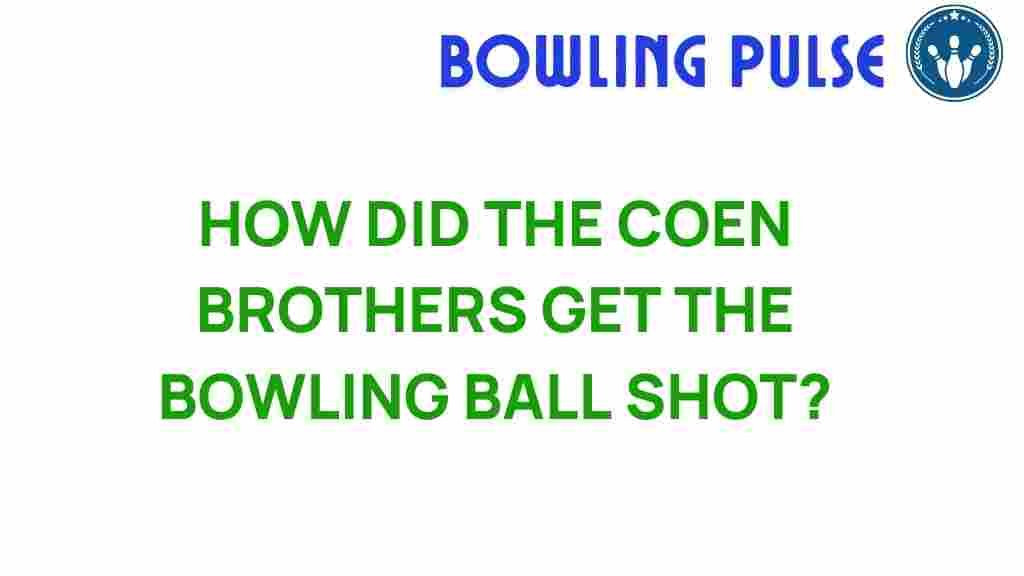Unraveling the Mystery Behind the Coen Brothers’ Iconic Bowling Ball Shot
The Coen Brothers have captivated audiences with their unique storytelling and innovative filmmaking techniques. Among their many cinematic gems, one scene stands out for its visual storytelling: the iconic bowling ball shot from “The Big Lebowski.” This moment not only exemplifies the Coen Brothers’ creative direction but also showcases their mastery of cinematography and movie magic. In this article, we will delve into the intricacies of this unforgettable scene, exploring the filmmaking techniques that make it so impactful.
The Context of the Scene
The Big Lebowski,” released in 1998, is a cult classic that blends elements of comedy, crime, and surrealism. The bowling ball shot occurs during a pivotal moment when the characters are deeply enmeshed in their chaotic lives. Understanding the context of this scene is essential for appreciating its artistic merit.
- Character Dynamics: The interactions among the characters are crucial to the narrative, and the bowling alley represents a refuge for the protagonist, Jeffrey Lebowski (played by Jeff Bridges).
- Thematic Relevance: Bowling serves as a metaphor for the characters’ struggles and aspirations, making the bowling ball shot more than just a visual spectacle.
Breaking Down the Bowling Ball Shot
The bowling ball shot is not just a random moment; it is a carefully crafted scene that highlights the Coen Brothers’ filmmaking techniques. Let’s break down the elements that contribute to its iconic status.
Cinematography
The cinematography in “The Big Lebowski” is noteworthy for its precision and style. The bowling ball shot utilizes various techniques that enhance the viewer’s experience:
- Camera Movement: The smooth tracking shot follows the bowling ball as it rolls down the lane, creating a sense of immersion.
- Depth of Field: The use of shallow depth of field draws attention to the ball, separating it from the background and emphasizing its importance.
- Lighting: The lighting in the bowling alley is soft and warm, contributing to the film’s overall aesthetic while creating a nostalgic atmosphere.
Visual Storytelling
Visual storytelling is a hallmark of the Coen Brothers’ work. The bowling ball shot encapsulates this technique by conveying the characters’ emotions and motivations without the need for dialogue. The slow-motion effect adds weight to the moment, allowing viewers to feel the gravity of the situation.
Symbolism of the Bowling Ball
The bowling ball itself carries significant symbolic weight. It represents:
- Control: The act of bowling symbolizes the characters’ attempts to regain control in a chaotic world.
- Destiny: The ball’s journey down the lane can be seen as a metaphor for the characters’ fates, highlighting the randomness of life.
Filmmaking Techniques Employed
The Coen Brothers are known for their meticulous attention to detail, and the bowling ball shot is no exception. Here are some filmmaking techniques they employed:
- Storyboarding: The scene was likely storyboarded to ensure that every aspect of the shot was planned out carefully.
- Camera Rigging: The use of specialized camera rigs allowed for the smooth tracking of the bowling ball, enhancing the visual impact.
- Editing: The pacing of the shot is crucial; it builds tension and anticipation before releasing the payoff.
Step-by-Step Process of Creating the Shot
Creating the iconic bowling ball shot involved several steps, each contributing to the final product:
- Pre-Production: This stage included script revisions, storyboarding, and location scouting to find the perfect bowling alley.
- Rehearsals: The actors likely participated in rehearsals to ensure their performances aligned with the visual storytelling.
- Filming: The crew set up the cameras, lighting, and props, capturing the shot from multiple angles for flexibility in editing.
- Post-Production: This involved editing the footage, adding sound effects, and refining the final product to ensure it met the Coen Brothers’ vision.
Troubleshooting Common Issues
While the Coen Brothers executed the bowling ball shot flawlessly, filmmakers can encounter common issues when attempting similar shots:
- Camera Shake: To avoid shaky footage, use a tripod or camera stabilizer.
- Lighting Problems: Ensure lighting is even and properly adjusted to avoid harsh shadows.
- Timing Issues: Practice the timing of movements to ensure the shot flows seamlessly.
Impact on Visual Storytelling
The bowling ball shot has left an indelible mark on visual storytelling within cinema. It demonstrates how a single shot can convey complex emotions and themes, elevating a film’s narrative. The Coen Brothers’ use of creative direction and cinematic techniques has inspired filmmakers worldwide to explore new avenues in visual storytelling.
Conclusion
The Coen Brothers’ iconic bowling ball shot from “The Big Lebowski” serves as a masterclass in filmmaking techniques and visual storytelling. Through meticulous cinematography, creative direction, and symbolic elements, this shot encapsulates the essence of the film and the struggles of its characters. By unraveling the mystery behind this moment, we gain insight into the magic of cinema and the artistry of the Coen Brothers. For more on their remarkable work, check out this resource on filmmaking techniques.
In conclusion, the bowling ball shot is not just a moment in film; it is a representation of the Coen Brothers’ unique style and their ability to craft scenes that resonate with audiences long after the credits roll. Whether you are a filmmaker or a film enthusiast, understanding the intricacies of such scenes can deepen your appreciation for the art of cinema.
For a further exploration of iconic scenes in filmmaking, visit this article that highlights other memorable moments across various films.
This article is in the category Techniques and created by BowlingPulse Team
